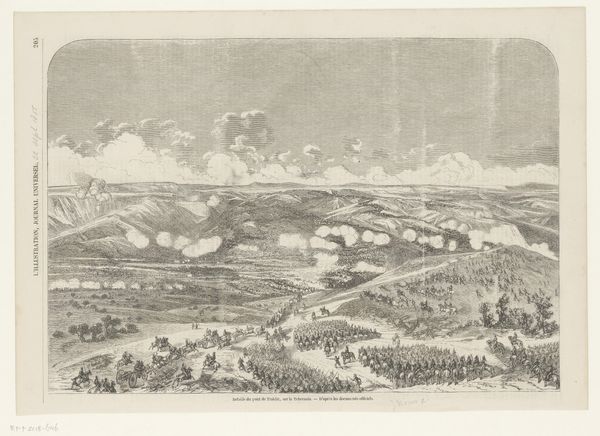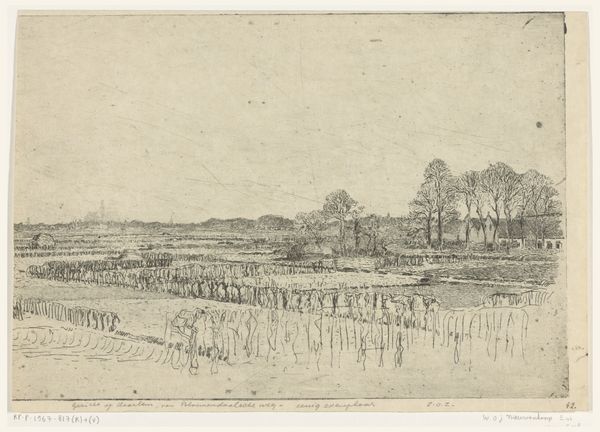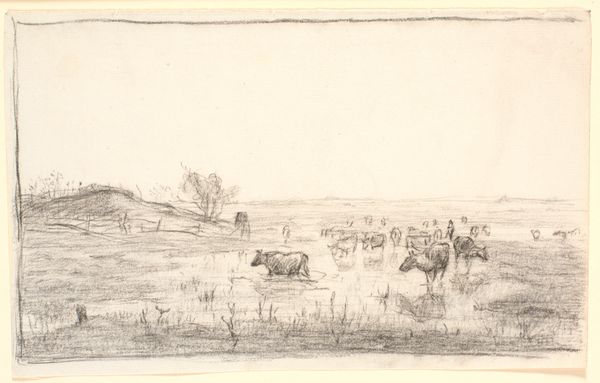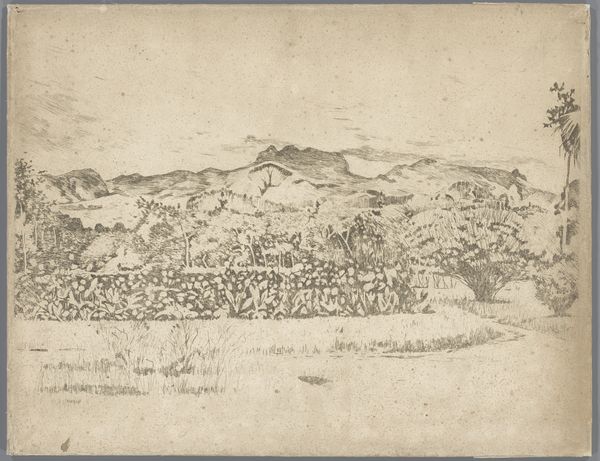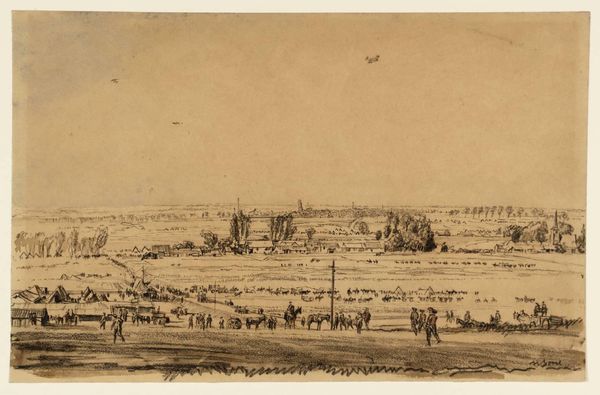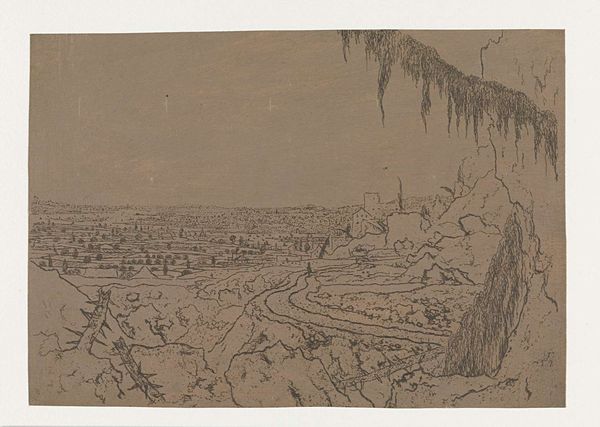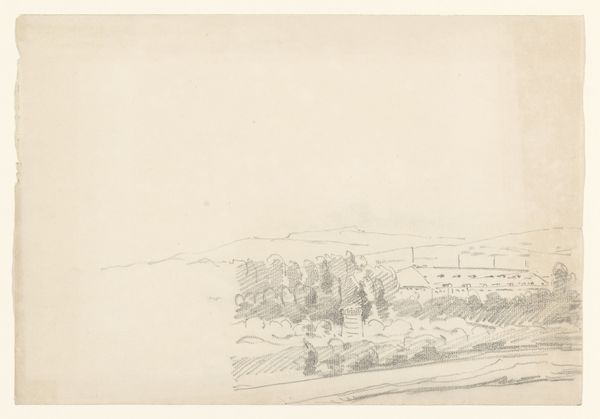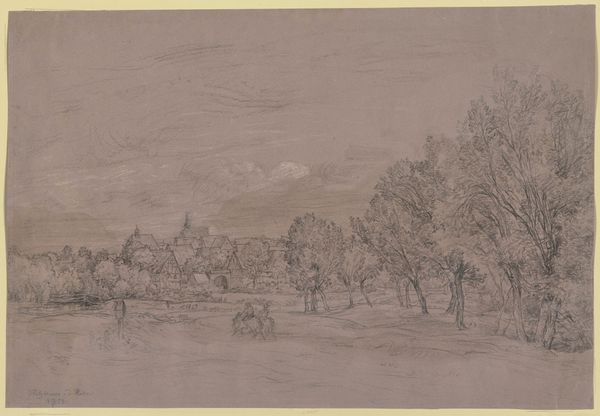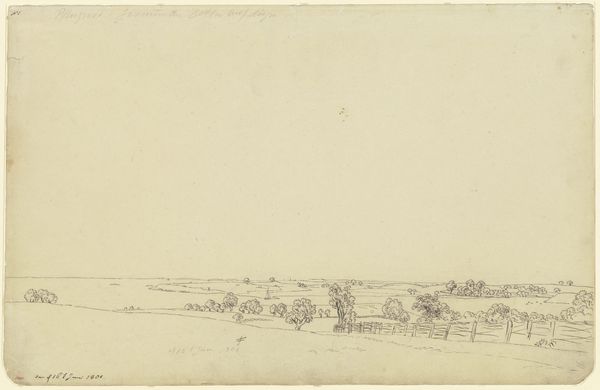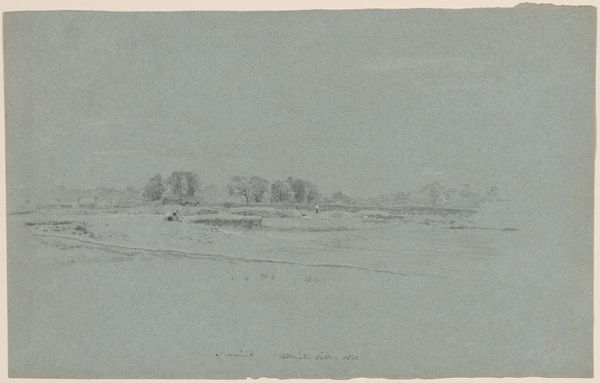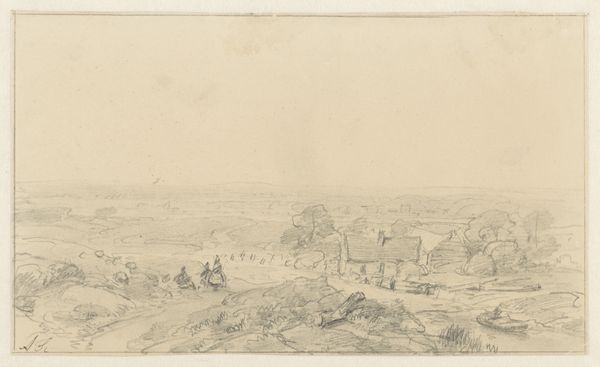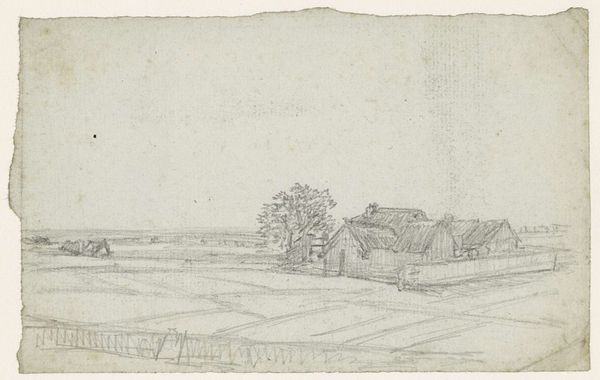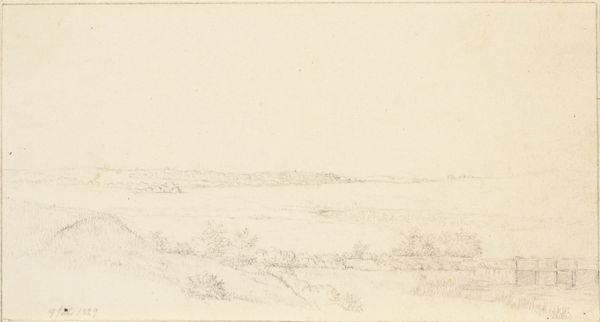
Bollenvelden aan de Bloemendaalseweg tussen Bloemendaal en Overveen 1899
0:00
0:00
Dimensions: height 207 mm, width 313 mm
Copyright: Rijks Museum: Open Domain
Curator: This drawing is titled "Bollenvelden aan de Bloemendaalseweg tussen Bloemendaal en Overveen," made in 1899 by Wijnand Otto Jan Nieuwenkamp. Editor: There's a starkness here. The composition feels very linear, almost regimented, with those repeated vertical strokes. It evokes a sense of cold and quiet desolation. Curator: Yes, the piece emphasizes a specific region renowned for its flower production and suggests an engagement with plein-air drawing. The landscape's character and the materials employed shape the overall effect, don't you think? We might consider how access to particular paper and pencils, plus the conditions of working outdoors, influenced his artistic choices. Editor: Certainly. The medium impacts the message, I agree, but also consider how those marks – those pencil strokes – form lines, create shape, build volume and recession. Observe the strategic use of the starkness in the empty sky. There is clear purpose here. Curator: Considering its social context, the artwork's very subject reveals the commercialisation of the Dutch landscape for bulb production in the late 19th century. Was Nieuwenkamp intending to highlight the transformation of farmland, or the economic possibilities? What relationship did the artist have with the owners of these lands? These are important points. Editor: Perhaps both—economic changes can often lead to exploitation or can reveal a novel sort of sublime. But to focus on what meets the eye, consider his intentional application of values to simulate a kind of atmospheric haze. Note how he softens details further in the distance to create the feeling of space. Curator: Thinking about how artists like Nieuwenkamp benefited from this burgeoning industry is compelling, especially when considering access to resources for both subject and tools of production. The materials here show signs of their period—were they easily obtainable for other artists? Editor: It's interesting to examine how that industrial progress is made apparent, visually. The almost rigid application of lines across the fields suggests control and division of space, reflecting contemporary methods of production. Curator: Precisely. I find it fascinating to situate such drawings within the framework of socio-economic conditions and consider the artist's positionality within that milieu. Editor: And I find that the formal rendering itself communicates aspects of the economic landscape, both in its subject matter and in the techniques deployed. What seems, initially, sparse opens to further reflection upon careful viewing.
Comments
No comments
Be the first to comment and join the conversation on the ultimate creative platform.
